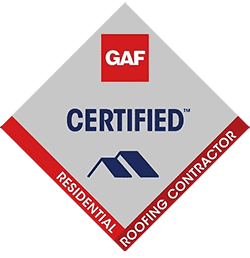Why TPO Roofing Is a Smart Choice for Commercial Buildings!
Durability, cost-effectiveness, and energy efficiency are key considerations when selecting the right roofing material for a commercial building.
Business owners and property managers in Orange, Port Arthur, and Beaumont Texas need a roofing solution that can withstand the region's harsh weather conditions, which include heavy rains and intense heat.
One of the best roofing options available today is a TPO membrane roof.
Whether you are looking for a new roofing installation or need TPO membrane roof repair, understanding the benefits of this roofing system can help you make an informed decision.
What Is TPO Roofing?
TPO or thermoplastic polyolefin is a single-ply roofing membrane that is widely used in commercial roofing.
This innovative material combines the durability of rubber with the flexibility of plastic, making it an excellent choice for flat and low-slope roofs.
TPO membrane roofs are known for their energy efficiency, resistance to environmental damage, and long-lasting performance, making them a preferred option for commercial buildings in Southeast Texas.
The Benefits of TPO Roofing for Commercial Buildings
1. Energy Efficiency and Cost Savings
One of the most significant advantages of TPO membrane roofs is their ability to reflect sunlight and reduce heat absorption.
This is particularly beneficial in Texas, where high temperatures can lead to excessive cooling costs.
The reflective properties of TPO help maintain a more stable indoor temperature, reducing the strain on HVAC systems and lowering energy bills.
By choosing TPO roofing installation, business owners can enjoy long-term savings on energy expenses while also reducing their carbon footprint.
2. Durability and Weather Resistance
Commercial buildings in Orange, Port Arthur, and Beaumont must endure harsh weather conditions, including strong winds, heavy rains, and even occasional hurricanes.
TPO roofing is designed to withstand these elements, offering excellent resistance to punctures, tears, and water infiltration.
The material is also resistant to mold, dirt, and debris buildup, ensuring a longer lifespan and fewer maintenance concerns.
3. Easy Maintenance and Repair
TPO membrane roof repair is relatively simple compared to other commercial roofing systems.
Unlike traditional materials that may require frequent patching or sealing, TPO roofing is designed to be low maintenance.
If a repair is necessary, a straightforward process involving heat-welded seams creates a seamless, watertight bond.
This means fewer disruptions for your business and lower long-term maintenance costs.
4. Environmentally Friendly
TPO roofing is an eco-friendly option for commercial buildings.
Many TPO membranes are manufactured using recyclable materials and their energy-efficient properties help reduce a building's overall environmental impact.
Additionally, the longevity of TPO roofing systems means fewer materials end up in landfills, making them a more sustainable choice for business owners who prioritize green building practices.
5. Cost-Effective Installation and Longevity
Another significant benefit of TPO membrane roofs is their cost-effectiveness.
TPO is relatively affordable compared to other roofing materials while still offering excellent performance.
The installation process is also quicker and more efficient, reducing labor costs and minimizing downtime for your business.
With a lifespan of 20 to 30 years, TPO roofing provides a strong return on investment, making it ideal for commercial property owners who want to maximize value.
TPO vs Other Commercial Roofing Options
When selecting a roofing system for a commercial building, comparing TPO with other common materials is essential.
Here's how TPO stacks up against some popular alternatives:
Overall, TPO roofing stands out as a cost-effective, energy-efficient, and durable choice for commercial buildings in Orange, Port Arthur, and Beaumont.
Choosing the Right TPO Roofing Contractor
Selecting the right contractor for your TPO roofing installation or TPO membrane roof repair is crucial to ensuring a successful and long-lasting roof.
Working with an experienced and reputable roofing company in Orange, Port Arthur, and Beaumont will make sure that your roof is installed correctly and maintained properly.
Look for contractors with a proven track record, positive customer reviews, and expertise in commercial roofing systems.
Is TPO Roofing Right for Your Commercial Building?
TPO roofing is undoubtedly a smart choice if you own or manage a commercial property in Southeast Texas.
TPO membrane roofs offer a range of advantages, from energy efficiency and durability to cost savings and environmental benefits, making them ideal for the region's climate.
Whether you need a new roofing installation or are considering TPO membrane roof repair, investing in this high-quality roofing solution can protect your property and enhance its long-term value.
Conclusion
Choosing the right roofing system for your commercial building is a critical decision that can affect its longevity, energy efficiency, and overall cost of ownership.
Thanks to its durability, affordability, and environmental benefits, TPO roofing stands out as a top choice for business owners in Orange, Port Arthur, and Beaumont.
If you are considering TPO roofing installation or need expert TPO membrane roof repair, consulting with a knowledgeable roofing contractor can help you make the best choice for your business.
With the right roofing system in place, you can enjoy peace of mind knowing that your commercial property is well-protected for years to come.
Key Takeaways
FAQs
1. How long does a TPO roof last?
TPO roofs typically last between 20 and 30 years with proper maintenance.
2. Is TPO roofing suitable for hot climates?
Yes, TPO's reflective properties help reduce heat absorption, making it ideal for the hot climate in Texas.
3. How much does TPO roofing installation cost?
Costs vary, but TPO is generally more affordable than PVC and comparable to EPDM.
4. Can TPO roofs be repaired easily?
Yes, TPO membrane roof repair is straightforward, often requiring heat-welded patches.
5. Is TPO roofing environmentally friendly?
Yes, many TPO membranes are recyclable and contribute to energy efficiency.
6. How does TPO compare to PVC roofing?
TPO is typically more cost-effective and does not contain plasticizers, making it less prone to brittleness.
7. Does TPO roofing require insulation?
While TPO is not highly insulative, it is often installed with insulation to enhance energy efficiency.
8. Can TPO roofing withstand hurricanes?
TPO is designed to be highly resistant to wind, punctures, and water infiltration, making it suitable for hurricane-prone areas.
9. How is TPO roofing installed?
TPO roofing is installed using heat-welded seams, which create a durable, watertight bond.
10. What maintenance does TPO roofing require?
Routine inspections and occasional cleaning are recommended to extend its lifespan and performance.
- EPDM Roofing - Ethylene Propylene Diene Monomer or EPDM is another single-ply roofing option. While EPDM is known for its flexibility and durability, it is typically black, which absorbs more heat and leads to higher cooling costs. On the other hand, TPO is highly reflective and better suited for hot climates like Texas.
- PVC Roofing - Polyvinyl Chloride pr PVC roofing is similar to TPO in terms of energy efficiency and durability; however, PVC is often more expensive and contains plasticizers that can lead to brittleness over time. TPO offers similar benefits at a lower cost with fewer long-term degradation concerns.
- Modified Bitumen Roofing - This multi-layered asphalt-based system is durable and offers good waterproofing, but it is heavier and requires more labor-intensive installation. TPO roofing provides a more lightweight and cost-effective alternative with similar longevity.
- Built-Up Roofing or BUR - BUR consists of multiple layers of tar and gravel, offering excellent waterproofing; however, it is more expensive to install and requires more extensive maintenance than TPO, which is easier to install and maintain.
- TPO roofing is an energy-efficient, cost-effective option for commercial buildings.
- It offers excellent durability and weather resistance, making it ideal for Southeast Texas.
- Maintenance and repair are straightforward, reducing long-term costs.
- Compared to other commercial roofing options like EPDM, PVC, and BUR, TPO provides a better balance of affordability, performance, and longevity.
- Choosing the right contractor is crucial for proper installation and maintenance.
Subscribe to High & Tight Roofing's Blog



Comments